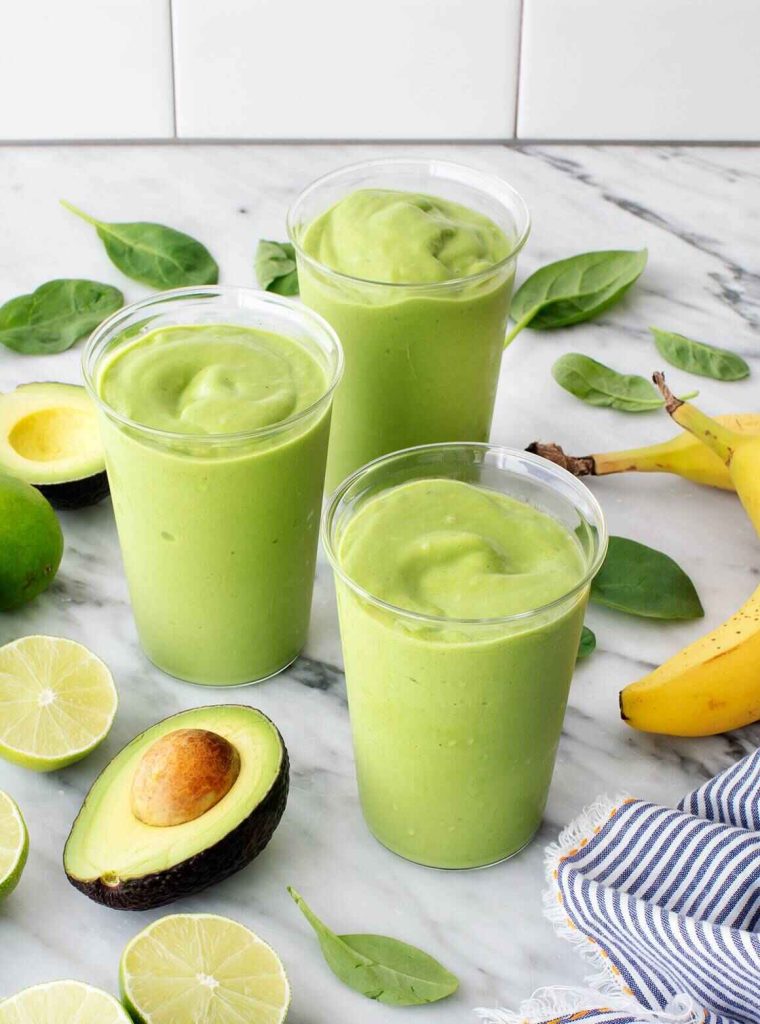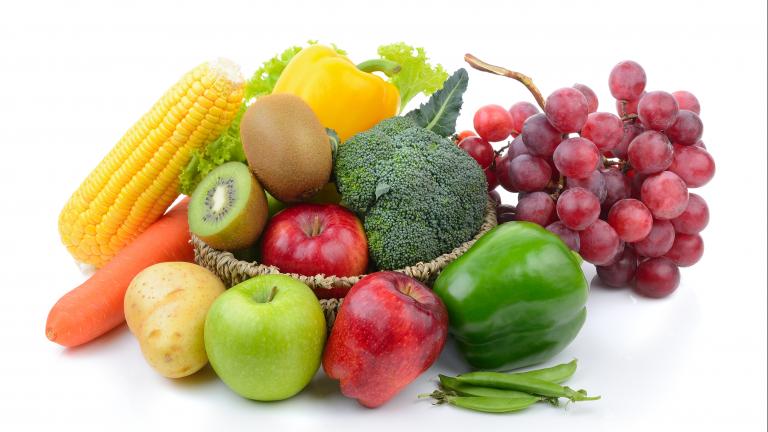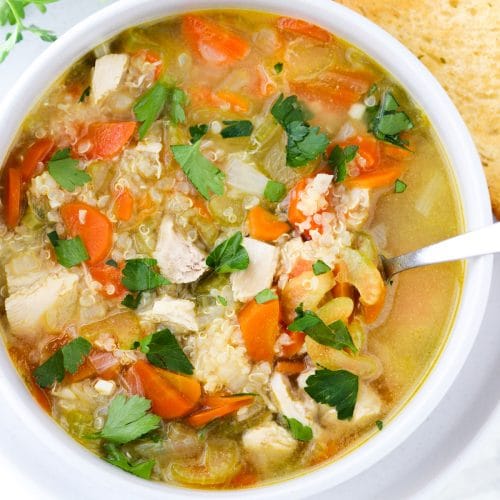Introduction:
Food For Chemo Patients Recipes Chemotherapy is a challenging experience for anyone undergoing cancer treatment. It can cause a range of side effects, including nausea, loss of appetite, taste changes, and fatigue, all of which can make eating a daunting task. However, maintaining proper nutrition is crucial for supporting the body through treatment, enhancing recovery, and improving overall well-being.
For chemo patients, meals should be easy to digest, nutrient-dense, and appetizing to help manage these side effects. This article will focus on some nourishing and easy-to-prepare recipes that can provide much-needed energy and comfort to those undergoing chemotherapy.
Key Nutritional Needs for Chemo Patients
Before diving into the recipes, it’s important to understand the specific nutritional needs of chemotherapy patients:
High-Protein Foods: Protein helps repair body tissues and keeps the immune system strong. Lean meats, beans, lentils, dairy products, eggs, nuts, and seeds are excellent sources.
Healthy Fats: Fats are a concentrated source of energy. Opt for healthy fats like avocados, olive oil, nuts, seeds, and fatty fish such as salmon and mackerel.
Complex Carbohydrates: Whole grains, fruits, and vegetables provide essential vitamins, minerals, and fiber. They help in maintaining energy levels and digestive health.
Hydration: Staying hydrated is crucial, especially if patients are experiencing vomiting or diarrhea. Water, herbal teas, and clear broths are helpful.
Gentle on the Stomach: Foods that are easy on the digestive system and mild in flavor can help combat nausea. Opt for bland or lightly seasoned dishes.
Nutritious Recipes for Chemo Patients
1.Chicken and Vegetable Quinoa Soup
This comforting soup is rich in protein and packed with vegetables, providing essential nutrients without being too heavy.
Ingredients:
1 cup quinoa, rinsed
2 cups cooked chicken breast, shredded
1 tablespoon olive oil
1 onion, finely chopped
2 carrots, sliced
2 celery stalks, sliced
2 garlic cloves, minced
4 cups low-sodium chicken broth
1 cup baby spinach leaves
Salt and pepper to taste
Fresh parsley, chopped (optional)
Instructions:
Heat olive oil in a large pot over medium heat. Add onion, carrots, and celery, and sauté until softened, about 5 minutes.
Add garlic and cook for another minute.
Pour in the chicken broth and bring to a boil. Add quinoa and cook for 15 minutes or until quinoa is tender.
Add shredded chicken and spinach. Simmer for 5 more minutes.
Season with salt, pepper, and fresh parsley before serving.
2.Creamy Avocado Smoothie
This smoothie is packed with healthy fats, proteins, and antioxidants. It’s perfect for a quick, nutrient-dense snack or breakfast.

Ingredients:
1 ripe avocado, peeled and pitted
1 cup unsweetened almond milk or any preferred milk
1 tablespoon honey or maple syrup
1/2 cup plain Greek yogurt
1/2 banana
1 tablespoon chia seeds (optional)
Ice cubes
Instructions:
Combine all ingredients in a blender.
Blend until smooth and creamy.
Serve immediately, garnished with additional chia seeds if desired.
3.Baked Salmon with Steamed Vegetables
Salmon is an excellent source of protein and omega-3 fatty acids, which are essential for maintaining muscle mass and reducing inflammation.
Ingredients:
2 salmon fillets
1 tablespoon olive oil
1 tablespoon lemon juice
1 teaspoon dried dill
Salt and pepper to taste
2 cups broccoli florets
1 cup baby carrots
1 cup snap peas
Instructions:
Preheat the oven to 375°F (190°C). Line a baking sheet with parchment paper.
Place the salmon fillets on the baking sheet. Drizzle with olive oil and lemon juice, then sprinkle with dill, salt, and pepper.
Bake for 15-20 minutes, or until the salmon is cooked through.
Meanwhile, steam the vegetables until tender.
Serve the baked salmon alongside steamed vegetables.
4.Oatmeal with Blueberries and Almond Butter
Oatmeal is a comforting and easy-to-digest food that provides fiber and essential vitamins. Adding blueberries and almond butter makes this dish more nutrient-dense and flavorful.
Ingredients:
1/2 cup rolled oats
1 cup water or milk of choice
1/2 cup fresh or frozen blueberries
1 tablespoon almond butter
1 teaspoon honey or maple syrup (optional)
A pinch of cinnamon
Instructions:
In a small saucepan, bring water or milk to a boil. Add the oats and reduce heat to a simmer.
Cook for about 5 minutes or until oats are tender, stirring occasionally.
Remove from heat and stir in blueberries, almond butter, and cinnamon.
Drizzle with honey or maple syrup if desired.
5.Lentil and Vegetable Stew
Lentils are a great source of plant-based protein and fiber. This hearty stew is easy to make, flavorful, and packed with nutrients.
Ingredients:
1 cup dried lentils, rinsed
1 tablespoon olive oil
1 onion, chopped
2 carrots, diced
2 zucchinis, diced
3 cups vegetable broth
1 can (14 oz) diced tomatoes
1 teaspoon ground cumin
Salt and pepper to taste
Fresh cilantro, chopped (optional)
Instructions:
Heat olive oil in a large pot over medium heat. Add onion and carrots and sauté for 5 minutes.
Add zucchini and cook for another 5 minutes.
Stir in lentils, broth, tomatoes, and cumin. Bring to a boil, then reduce heat and simmer for 30 minutes or until lentils are tender.
Season with salt and pepper, and garnish with fresh cilantro.
Final Thoughts
Eating well during chemotherapy can be challenging, but it is crucial for maintaining strength and supporting recovery. The recipes provided here are designed to be gentle on the stomach, easy to prepare, and packed with nutrients to help chemo patients feel their best. Remember that individual tolerances can vary, so it is always best to consult with a healthcare professional or dietitian to tailor meals to specific needs and preferences.
By focusing on nourishing, easy-to-digest foods, you can help make the journey through chemotherapy a little more manageable and flavorful.
What foods help chemo work better?
Food For Chemo Patients Recipes Chemotherapy is a powerful treatment for cancer, but it often comes with challenging side effects. The right diet can play a crucial role in supporting the body during this intense period. While no specific foods can directly enhance the effectiveness of chemotherapy, a well-balanced diet can help the body better tolerate treatment, support the immune system, and improve overall well-being. Here’s a look at the types of foods that can help chemotherapy work better by boosting the body’s resilience and recovery.
1.Protein-Rich Foods
Chemotherapy can sometimes lead to muscle loss and weaken the immune system, making it important to include protein-rich foods in your diet. Lean meats like chicken and turkey, fish, eggs, dairy products such as yogurt and cheese, and plant-based sources like beans, lentils, and tofu are excellent choices. These foods can help maintain strength and support the body’s recovery processes.
2.Healthy Fats
Healthy fats are a concentrated source of energy and are important for overall health. They can help maintain body weight, which is crucial for those experiencing weight loss due to chemotherapy. Include sources of healthy fats such as avocados, nuts, seeds, and olive oil. Fatty fish like salmon and mackerel are also beneficial, as they provide omega-3 fatty acids that can help reduce inflammation and support heart health.
3.Fruits and Vegetables

Fruits and vegetables are rich in vitamins, minerals, and antioxidants, which can help strengthen the immune system and combat oxidative stress. Leafy greens like spinach and kale, cruciferous vegetables such as broccoli and Brussels sprouts, and berries like blueberries and strawberries are particularly nutrient-dense. They provide essential nutrients that support overall health and can help counteract some of the negative effects of chemotherapy.
4.Whole Grains
Whole grains are an important source of complex carbohydrates, fiber, and essential nutrients. They provide sustained energy, which is particularly useful for those feeling fatigued from treatment. These foods help stabilize blood sugar levels and support digestive health, which can be beneficial for managing chemotherapy-related side effects like constipation.
5.Hydration
Staying well-hydrated is crucial, especially if chemotherapy causes nausea, vomiting, or diarrhea. Drinking plenty of fluids helps keep the body hydrated and supports overall health. For added nutrition, consider incorporating smoothies made with fruits, vegetables, and protein sources like yogurt or nut butters.
6.Gentle and Easily Digestible Foods
Chemotherapy can make certain foods difficult to tolerate. Opt for bland, easy-to-digest foods that are less likely to irritate the stomach. Simple soups, rice, applesauce, and crackers can be soothing and help manage nausea. Avoid overly spicy or greasy foods that may exacerbate digestive issues.
Final Thoughts
While no specific foods will make chemotherapy more effective, a balanced diet can significantly impact how well the body copes with treatment. By focusing on protein-rich foods, healthy fats, fruits and vegetables, whole grains, and proper hydration, you can support your overall health and help your body better manage the challenges of chemotherapy. Always consult with a healthcare provider or dietitian to tailor dietary choices to your individual needs and treatment plan.
How often should you eat during chemo?
Chemotherapy is a rigorous treatment that often brings with it a range of side effects such as nausea, loss of appetite, and changes in taste. Navigating eating habits during this period can be challenging, and understanding how often to eat can play a significant role in managing these side effects and maintaining overall health. While individual needs can vary, here’s a comprehensive guide on how often you should eat during chemotherapy to support your treatment and recovery.
1.Eating Small, Frequent Meals
For many undergoing chemotherapy, eating smaller, more frequent meals can be beneficial. Rather than sticking to the traditional three large meals a day, consider eating five to six smaller meals. This approach can help manage nausea and prevent overwhelming the digestive system. Small meals are less likely to cause discomfort and can make it easier to maintain energy levels throughout the day.
How to Implement:
Meal Timing: Aim to eat every 2 to 3 hours. This could include three main meals and two to three snacks.
Portion Size: Keep portion sizes small to avoid overloading your digestive system. A small plate or bowl can help control portions.
Snacking Smartly: Choose nutrient-dense snacks such as yogurt, nuts, fruit, or whole-grain crackers to ensure you’re getting essential vitamins and minerals.
2.Listening to Your Body
Chemotherapy can affect appetite in various ways, including increased or decreased hunger. It’s important to listen to your body’s cues. Some days you may feel hungry more often, while other days you might not have much appetite at all. Adjusting your eating schedule based on your current needs can help you maintain proper nutrition without feeling pressured.
How to Implement:
Hunger Cues: Eat when you feel hungry, even if it’s outside your usual eating schedule.
Appetite Changes: On days when your appetite is low, focus on nutrient-rich, easy-to-digest foods that are more appealing and less taxing on your stomach.
3.Hydration and Eating Patterns
Staying hydrated is just as important as eating regularly, especially when undergoing chemotherapy. Drinking fluids between meals can help maintain hydration levels without making you feel too full to eat. However, try to avoid drinking large amounts of liquid right before or during meals, as this can decrease your appetite.
How to Implement:
Fluid Intake: Drink water, herbal teas, or clear broths throughout the day. Aim for at least 8 cups of fluids daily, but adjust based on your needs and any guidance from your healthcare provider.
Meal Timing: Allow a gap of 30 minutes to an hour between drinking and eating to prevent feeling overly full.
4.Managing Side Effects with Eating Frequency
Chemotherapy often causes side effects such as nausea, mouth sores, and taste changes, which can affect how often you want to eat. Adapting your eating schedule to manage these symptoms can make a significant difference.
How to Implement:
Nausea Management: Eat bland, easy-to-digest foods that are less likely to trigger nausea. Small, frequent meals can help prevent an empty stomach, which can worsen nausea.
Mouth Sores: Choose soft, non-acidic foods to avoid irritation. Foods like mashed potatoes, smoothies, and soups can be soothing.
Taste Changes: If your taste buds are altered, experiment with different flavors and textures to find what is most palatable.
5.Nutritional Balance and Eating Frequency
Maintaining a balanced diet is crucial during chemotherapy, but it can be challenging if you’re not eating frequently. Smaller, regular meals can help ensure you’re getting a steady intake of essential nutrients without feeling overwhelmed.
How to Implement:
Balanced Meals: Include a variety of food groups in each meal or snack—protein, healthy fats, carbohydrates, and fruits and vegetables.
Nutrient-Dense Choices: Focus on nutrient-dense foods like lean proteins, whole grains, and fresh produce to meet your nutritional needs even with smaller meal sizes.
6.Consulting with a Dietitian
A registered dietitian specializing in oncology can provide personalized advice based on your specific needs and treatment plan.
How to Implement:
Professional Guidance: Schedule regular consultations with a dietitian to adjust your eating plan as needed.
Customized Plans: Work with your dietitian to create a meal plan that considers your treatment side effects, preferences, and nutritional requirements.
Final Thoughts
Determining how often to eat during chemotherapy involves balancing your body’s needs with managing side effects. Eating small, frequent meals can help address nausea, maintain energy levels, and support overall health. Listening to your body, staying hydrated, and working with a healthcare professional can enhance your ability to manage treatment and support recovery. Every individual’s experience with chemotherapy is unique, so flexibility and personalized adjustments are key to finding an eating routine that works best for you. Discover which foods can trigger joint inflammation and exacerbate arthritis symptoms, helping you make informed dietary choices for joint health.
Can you eat whatever you want on chemo?
Food For Chemo Patients Recipes Chemotherapy is a rigorous treatment for cancer that can affect various aspects of health, including appetite, taste, and digestion. Given the significant impact of chemotherapy on the body, the question often arises: can you eat whatever you want while undergoing treatment?
While the notion of eating whatever you want may seem appealing, especially when dealing with the challenges of chemotherapy, it is essential to approach your diet thoughtfully. Here’s why paying attention to what you eat during chemotherapy is crucial, and how making informed dietary choices can support your treatment and overall well-being.
The Impact of Chemotherapy on Appetite and Nutrition
Chemotherapy can lead to a variety of side effects that influence eating habits and nutritional intake:
Nausea and Vomiting: These common side effects can make eating difficult and unpleasant.
Altered Taste: Changes in taste perception can affect how food tastes, making previously enjoyed foods unappealing.
Loss of Appetite: Many patients experience a reduced appetite, which can lead to insufficient calorie and nutrient intake.
Digestive Issues: Chemo can cause symptoms like diarrhea or constipation, impacting your ability to consume certain foods.
Given these challenges, eating “whatever you want” might not always be the best strategy. While it is important to enjoy your meals and satisfy cravings, focusing on nutrient-dense and easy-to-digest foods can help manage side effects and support overall health.
Why It Matters: The Importance of Nutritional Choices
Maintaining Strength and Energy
Chemotherapy can be physically draining. To support your body and maintain energy levels, it is crucial to focus on a balanced diet that includes adequate protein, healthy fats, and complex carbohydrates. Nutrient-rich foods can help keep your strength up and support your immune system, which is essential during treatment.
Managing Side Effects
Certain foods can exacerbate chemotherapy-related side effects. For example:
Spicy or Greasy Foods: These can worsen nausea and digestive discomfort.
Acidic Foods: Citrus fruits and tomatoes can irritate the mouth and exacerbate mouth sores.
High-Sugar Foods: Excessive sugar can lead to blood sugar spikes and may contribute to weight gain, which can be a concern if your appetite is already low.
Opting for bland, easy-to-digest foods can help alleviate nausea and make eating more manageable.
Supporting Recovery
A well-balanced diet supports the body’s recovery and helps rebuild tissues damaged by chemotherapy. Foods rich in vitamins, minerals, and antioxidants can aid in healing and reduce the risk of infections. Nutritional support can enhance your overall recovery and contribute to better treatment outcomes.
Practical Tips for a Balanced Diet During Chemo
Prioritize Nutrient-Dense Foods
Focus on foods that provide essential nutrients. These foods can help meet your nutritional needs even if you have a reduced appetite.
Choose Easy-to-Digest Options
If you’re dealing with nausea or digestive issues, opt for bland, easily digestible foods such as plain rice, applesauce, bananas, and toast. Soups, broths, and smoothies can also be soothing and provide essential nutrients in a more palatable form.
Stay Hydrated
Proper hydration is important, especially if you experience vomiting or diarrhea. Avoid sugary or caffeinated drinks that can exacerbate dehydration.
Listen to Your Body
Chemotherapy can affect your taste and appetite, so it’s important to listen to your body’s cues. Eat when you’re hungry and choose foods that appeal to you at the moment. If you find that certain foods or flavors are more enjoyable, incorporate them into your diet as much as possible.
Consult with a Dietitian
A registered dietitian specializing in oncology can offer personalized guidance based on your treatment plan and specific needs. They can help you develop a meal plan that addresses your side effects, preferences, and nutritional requirements.
Final Thoughts
Food For Chemo Patients Recipes While the idea of eating whatever you want during chemotherapy might seem tempting, making informed dietary choices is crucial for managing treatment side effects and supporting overall health. Focusing on nutrient-dense, easy-to-digest foods, staying hydrated, and listening to your body can help you better navigate the challenges of chemotherapy. Always consult with your healthcare team or a dietitian to tailor your diet to your individual needs and ensure you’re getting the support you need during this critical time. Try this refreshing juice recipe for high blood pressure: Blend beetroot, celery, and apple for a nutrient-packed drink that supports heart health and lowers blood pressure.
As an Amazon Associate, We earn from qualifying purchases. When you purchase a product through Amazon links on kitchenadvising.com, we may earn a small commission at no extra cost to you. This helps support the site and keep our content free.


